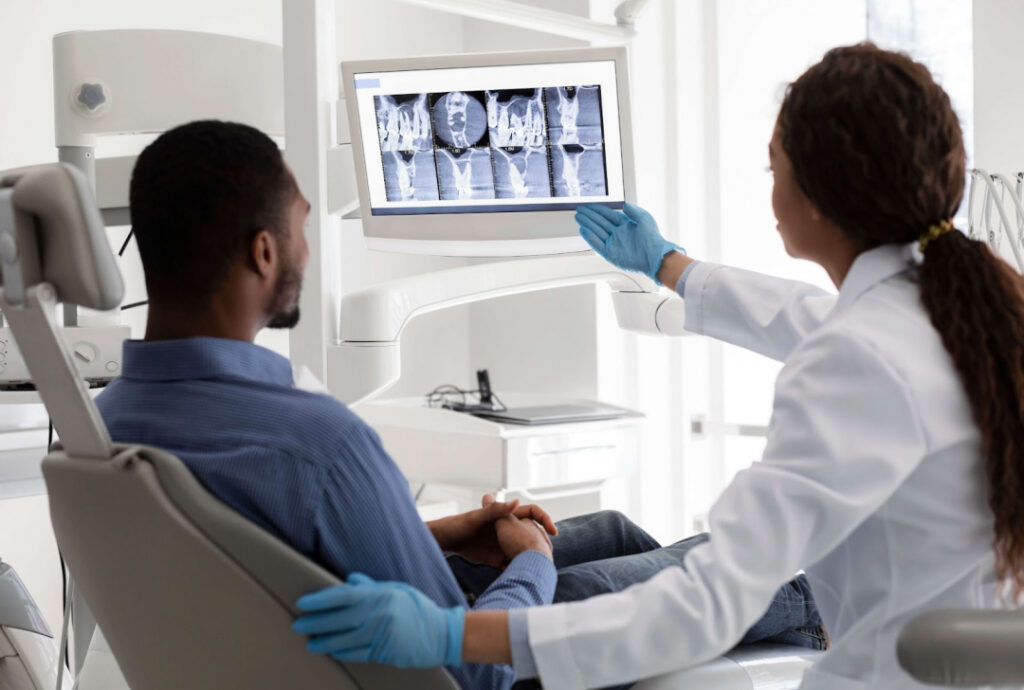Artificial intelligence (AI) has emerged as a powerful tool in various fields, including healthcare. In orthodontics, AI is revolutionizing treatment planning and outcomes by offering innovative solutions to traditional challenges.
In this blog, we’ll explore the role of artificial intelligence in orthodontics and how it is transforming the landscape of orthodontic treatment.
Advanced Treatment Planning:
One of the primary applications of AI in orthodontics is in treatment planning. AI algorithms can analyze patient data, including dental scans, images, and medical history, to generate personalized treatment plans.
By leveraging machine learning techniques, AI can identify patterns, predict treatment outcomes, and recommend the most effective orthodontic interventions for individual patients.
Predictive Modeling:
AI-powered predictive modeling tools can forecast the progression of orthodontic treatment and predict potential complications or challenges. By analyzing large datasets of patient outcomes, AI algorithms can identify risk factors, optimize treatment protocols, and enhance treatment predictability.
This enables orthodontists to make informed decisions and tailor treatment plans to each patient’s unique needs, ultimately improving treatment outcomes and patient satisfaction.
Virtual Treatment Simulation:
Virtual treatment simulation tools powered by AI allow orthodontists to visualize and simulate treatment outcomes before initiating treatment. By inputting patient data into AI-driven software, orthodontists can create virtual 3D models of the patient’s teeth and jaws, simulate orthodontic movements, and visualize the anticipated changes in tooth alignment and occlusion.
This enables orthodontists and patients to collaborate on treatment planning, set realistic expectations, and make informed decisions about treatment options.
Automated Image Analysis:
AI algorithms can automate the analysis of dental images, including X-rays, intraoral scans, and photographs. By using computer vision techniques, AI can detect and quantify orthodontic parameters such as tooth angulation, rotation, and spacing. This streamlines the diagnostic process, reduces human error, and enhances the efficiency and accuracy of treatment planning.
Remote Monitoring and Teleorthodontics:
AI-powered remote monitoring systems enable orthodontists to remotely track patients’ progress throughout treatment. By integrating AI algorithms with wearable devices or smartphone apps, orthodontists can monitor treatment compliance, track changes in tooth movement, and detect potential issues in real-time.
This facilitates proactive intervention, improves patient communication, and enhances treatment efficiency, particularly in remote or underserved areas.
Artificial intelligence is poised to revolutionize the field of orthodontics by offering innovative solutions to traditional challenges. From advanced treatment planning and predictive modeling to virtual treatment simulation and automated image analysis, AI is transforming the way orthodontic treatment is planned, executed, and monitored.
By harnessing the power of AI, orthodontists can improve treatment outcomes, optimize clinical workflows, and deliver personalized, patient-centric care that meets the evolving needs of patients in the digital age.


